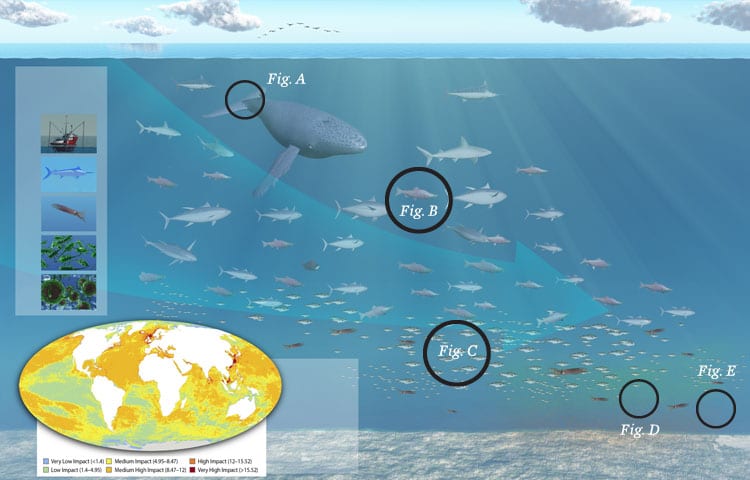July 29, 2011
Friday Infographic: Fishing Down the Food Chain
This is the second in a series of ocean infographics by artist Don Foley. These infographics also appear in Oceana board member Ted Danson’s book, “Oceana: Our Endangered Oceans and What We Can Do to Save Them.”
With shark week fast approaching, how about a shark-related infographic to whet your appetite?
Today’s infographic illustrates how overfishing fundamentally alters ocean ecosystems, leading to fewer and smaller fish over time.

If overfishing isn’t stopped, the largest fish like sharks, tuna, cod, and salmon eventually run out and overfishing expands to previously untargeted, smaller species, some of which were considered undesirable. As a result, the world catch is now primarily made up of small fish like pollock rather than large predators like grouper, and this shift to smaller and smaller species over time is called “fishing down the food chain.”
Fig. A: Sharks and killer whales are apex predators that feed on large fish in the food chain.
Fig. B: Tuna and salmon are large fish that feed on schooling fish, squid and shellfish
Fig. C: Sardines, pollock and squid are small prey species that form large schools and feed on microscopic animals, plants and leftovers.
Fig. D: Zooplankton are microscopic animals that eat tiny plants.
Fig. E: Phytoplankton make sugar using solar energy, just like plants on land, and form the base of the food web.
MOST RECENT
August 29, 2025
August 22, 2025
Corals, Community, and Celebration: Oceana Goes to Salmonfest!



